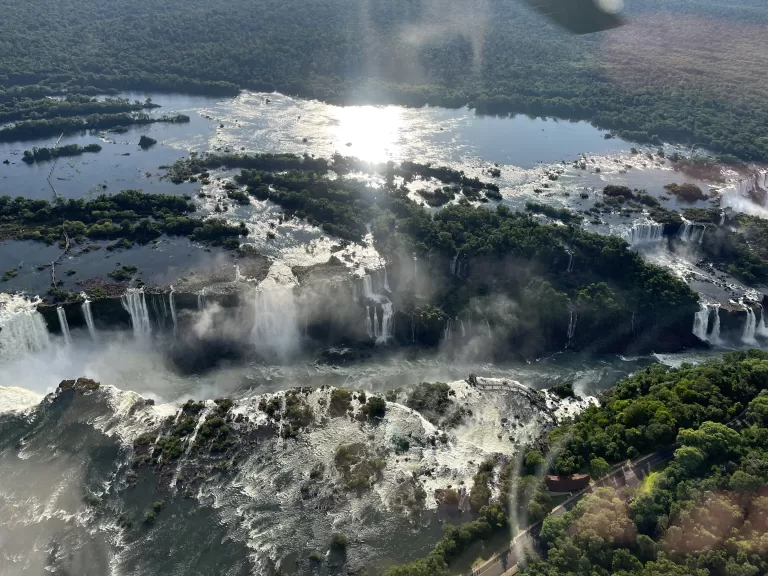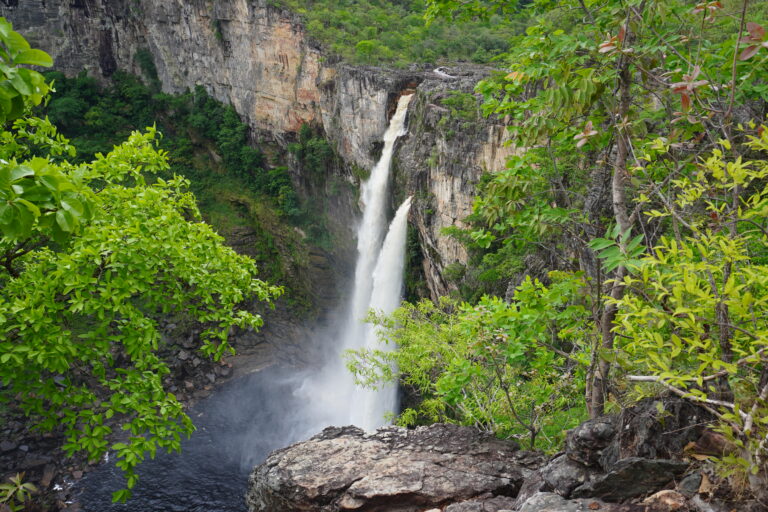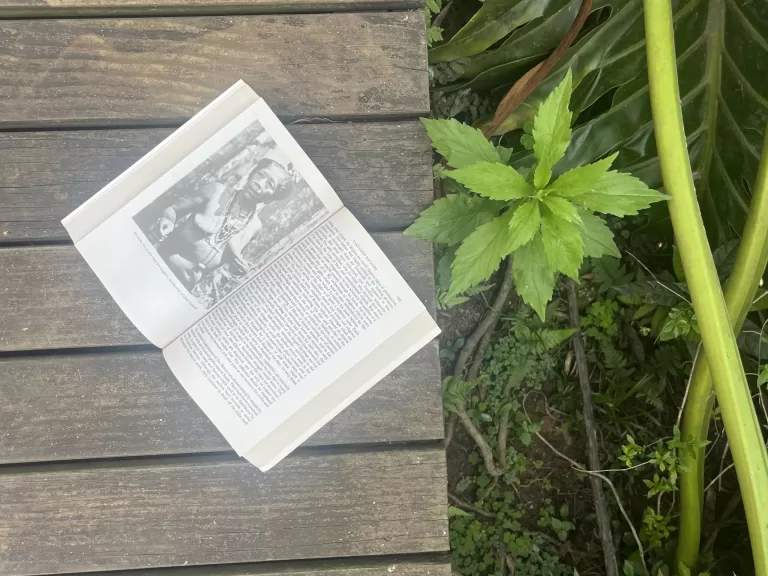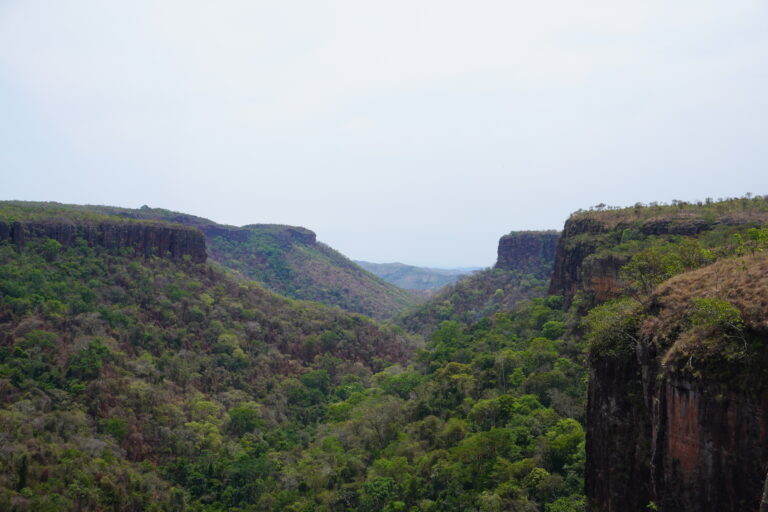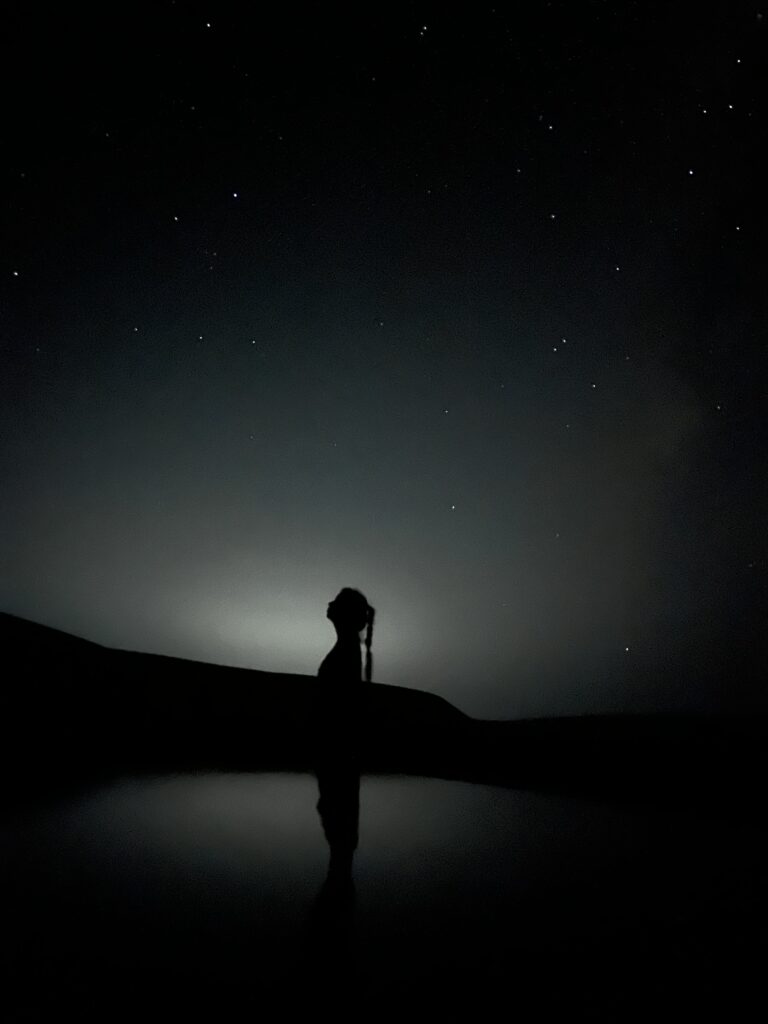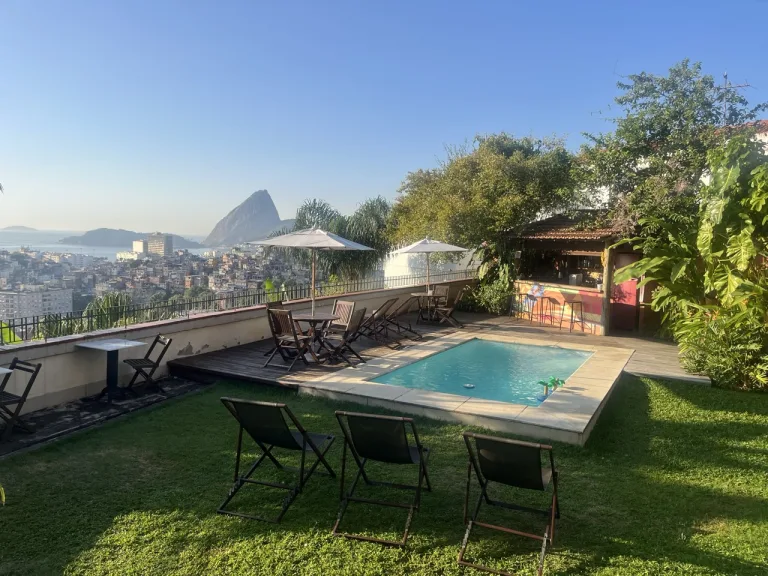How to Go to Porto Jofre, Pantanal, Brazil: Travel Guide
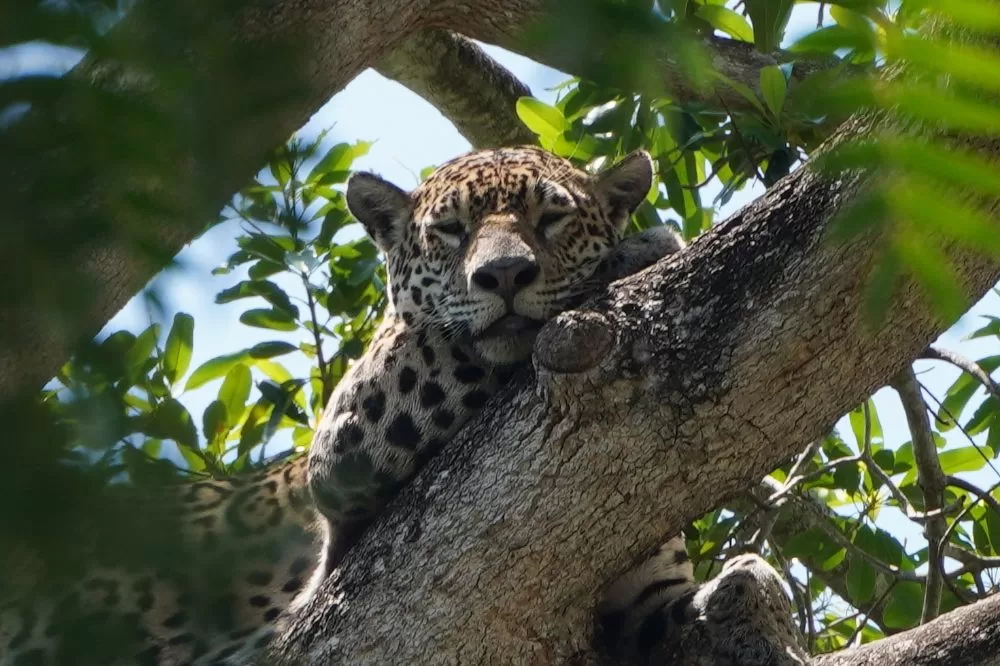
Prices in this guide have been updated to reflect costs of a trip in September 2025
Porto Jofre located in Mato Grosso, Brazil is the best place in the world to see jaguars in the wild!
This destination in the riverbanks of Pantanal North is a true hidden gem, and in my opinion the #1 best jaguar safari destination in Brazil’s Pantanal. I spent three days exploring Porto Jofre and was able to spot 5 jaguars and tons of other amazing wildlife!
In this article, we’ll cover everything you need to know to plan your wildlife-watching trip to Porto Jofre — even if, like me, you’re traveling on a budget!
What is so special about Porto Jofre?
Porto Jofre is located by the river banks in Pantanal where wildlife thrives. Jaguars, capybaras, giant otters, caimans, jabiru, and much more! Because the local wildlife relies heavily on the river for hunting, animal sightings are abundant during boat tours.

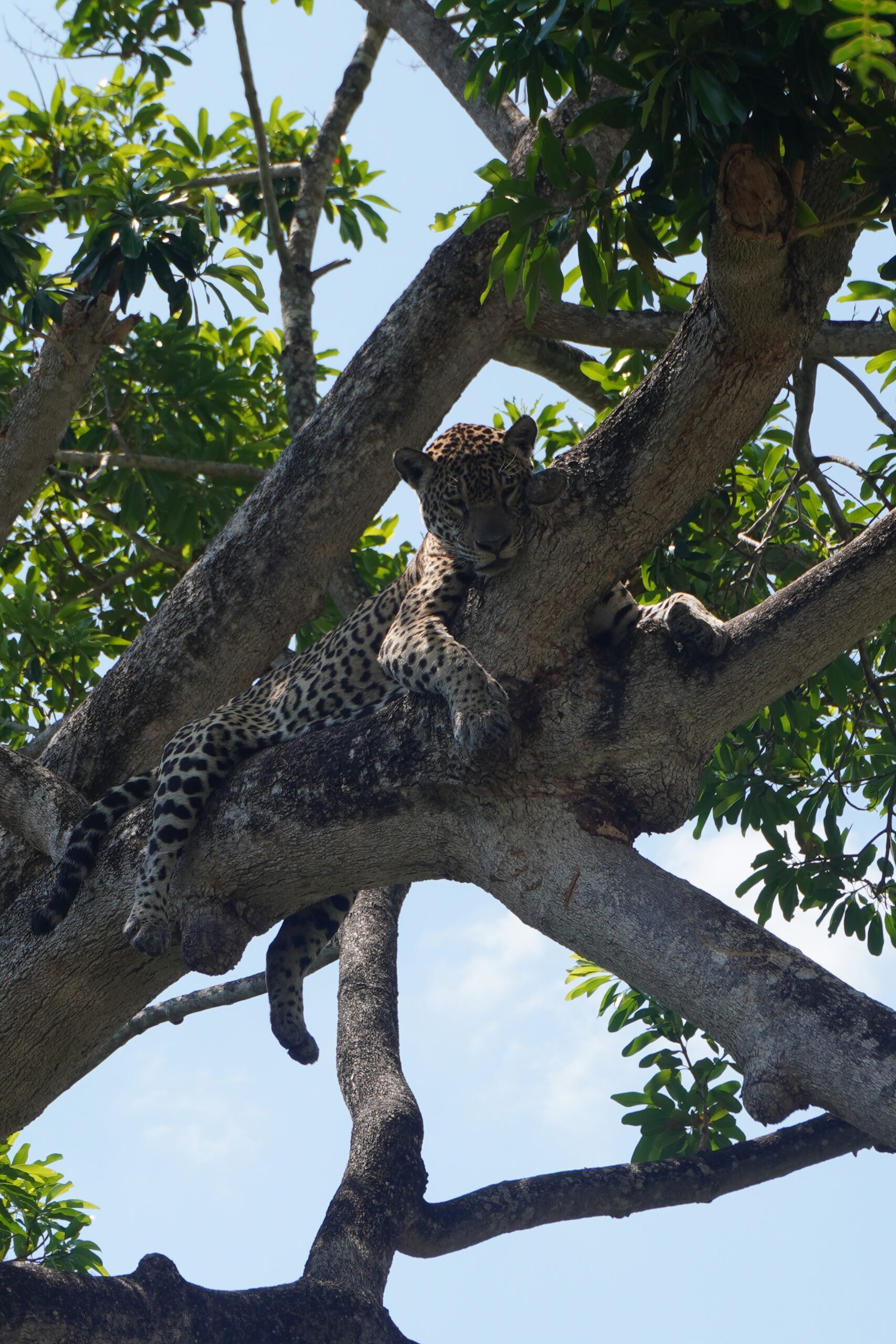
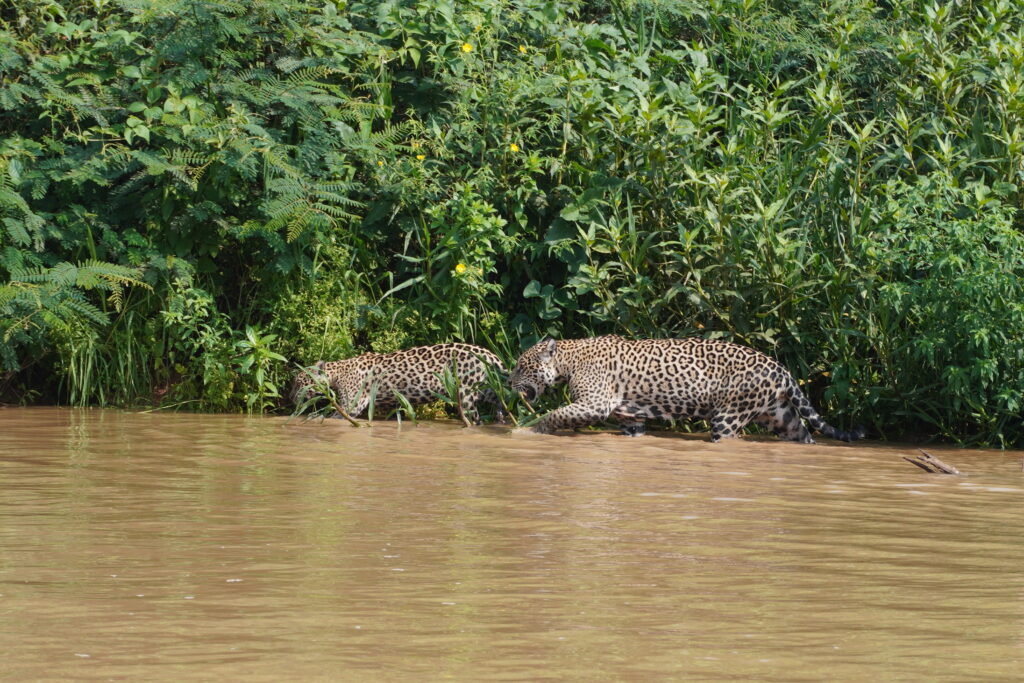
Fun fact: Jaguars found in Pantanal are twice as large as those found in other biomes!
When to visit Pantanal North and Porto Jofre?
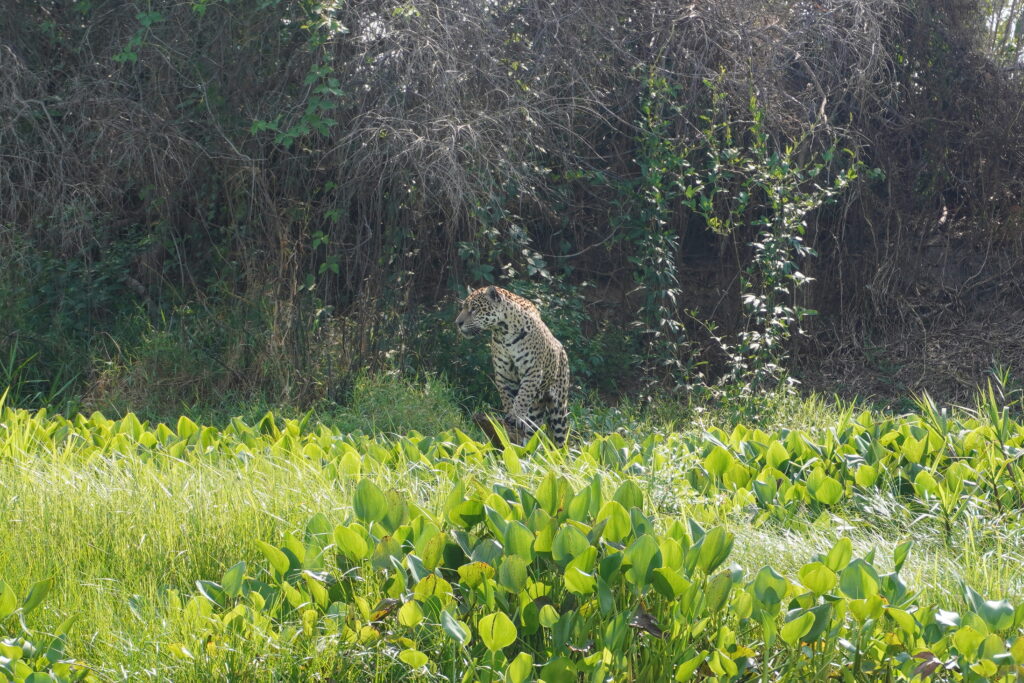
The best time to visit Porto Jofre and spot Jaguars is during the dry season, which ranges from June to September. Local guides told me that jaguar sightings happen in ~98% of tours during the dry season.
Please note that although the dry season is ideal for jaguar watching, there is also a risk of coming across wildfires, which are sadly common in the Pantanal.
I visited Porto Jofre off-season in mid-October, and was still able to observe 5 jaguars during a single day tour! The only downsides of visiting in October were the muddy conditions of the Transpantaneira road and the chance of rain.
The landscape in Porto Jofre changes a lot throughout the year, and even if not visiting during the dry season you are sure to spot unique animals!
Any questions?
Ask all your questions in our Brazil travel Facebook group — we’ll be happy to help!
How to get to Porto Jofre?

Although most tourists get to Porto Jofre by joining a multi-day group expedition, the best way for the average tourist to visit Porto Jofre is by driving from Cuiaba (the city home to the CGB Airport). I recommend driving to Porto Jofre for a 1 or 2-night stay and avoiding the wildlife expeditions, which are only relevant to professional wildlife Photographers.
To reach Porto Jofre, fly into Aeroporto Internacional de Cuiabá and rent a car. In the airport, the best car rental companies available are Localiza and Movida.
From Cuiabá, drive about an hour on paved roads to the entrance of Poconé, then continue 137 km (85 miles) on the unpaved Transpantaneira road. The drive is stunning!
Pro tip: Get full insurance when renting a car! The stones on the dirt road may cause damage to the car’s windows and tires, so it is best to be covered with a $0 copay. When booking a rental car online, do not select full insurance just yet. We found it much cheaper to just book the car with standard insurance and then upgrade it to full insurance during pick-up.
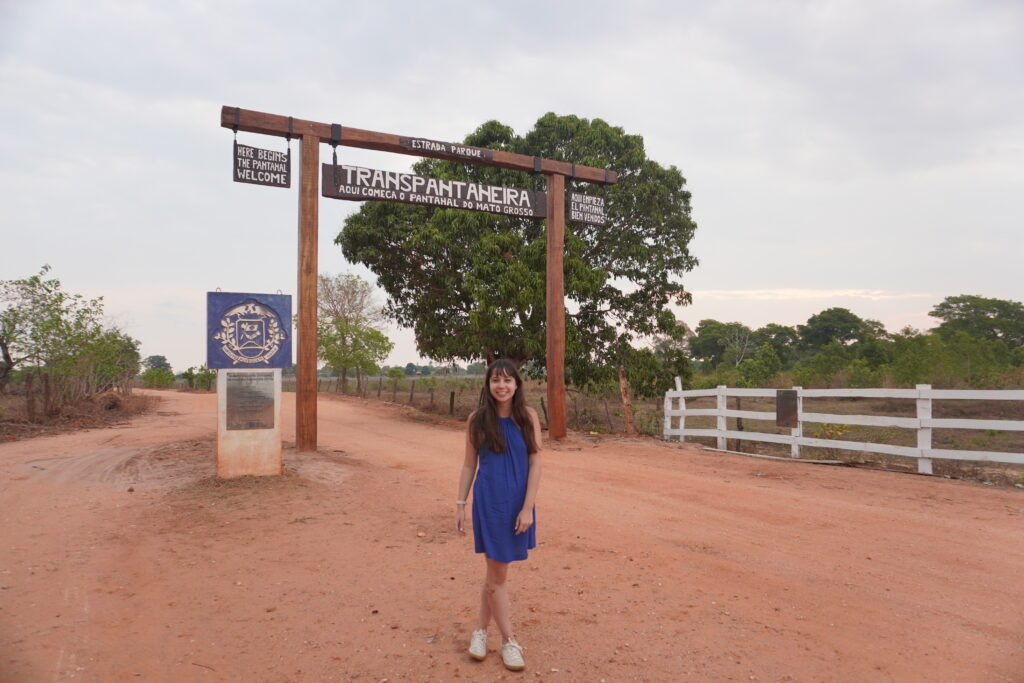
The Transpantaneira is safe to drive on just about any car when it is dry. If just a bit wet, this road becomes dangerous for anything other than a 4×4. For extra safety, I’d avoid driving at night.
Allow ~3-5 hours to go through the Transpantaneira as you might want to stop multiple times to enjoy the scenery.
Pro tip: Refuel your car right in Poconé, right before entering the Transpantaneira! There are no gas stations between Poconé and Porto Jofre, so it is always best to start the drive with a full tank.
Throughout the road, you can spot lots of wildlife such as caimans, capybaras, and jabiru.
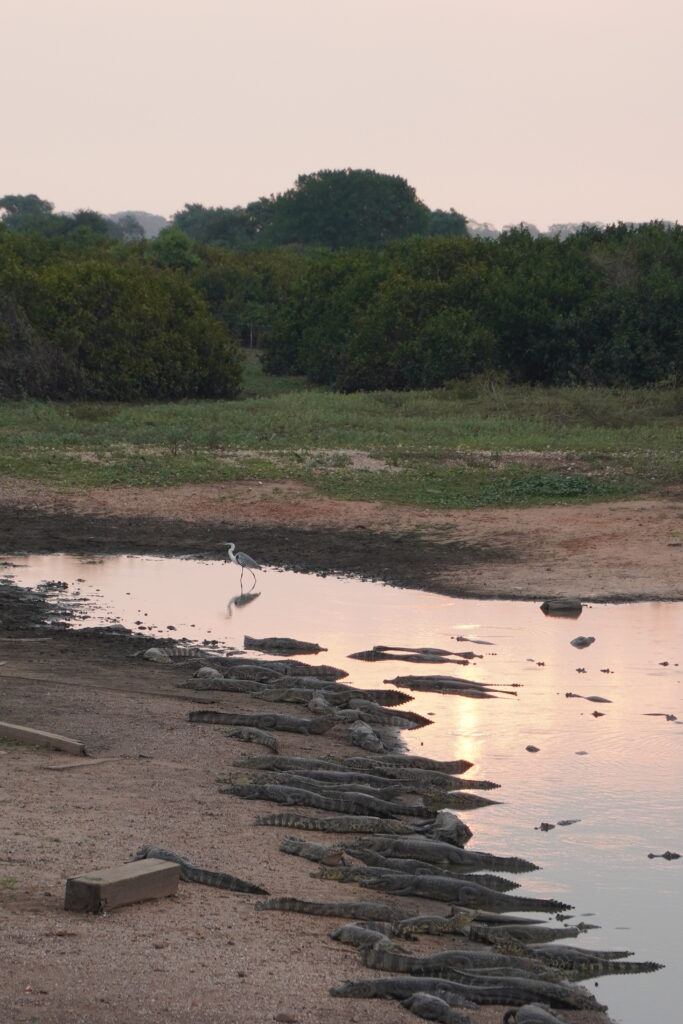
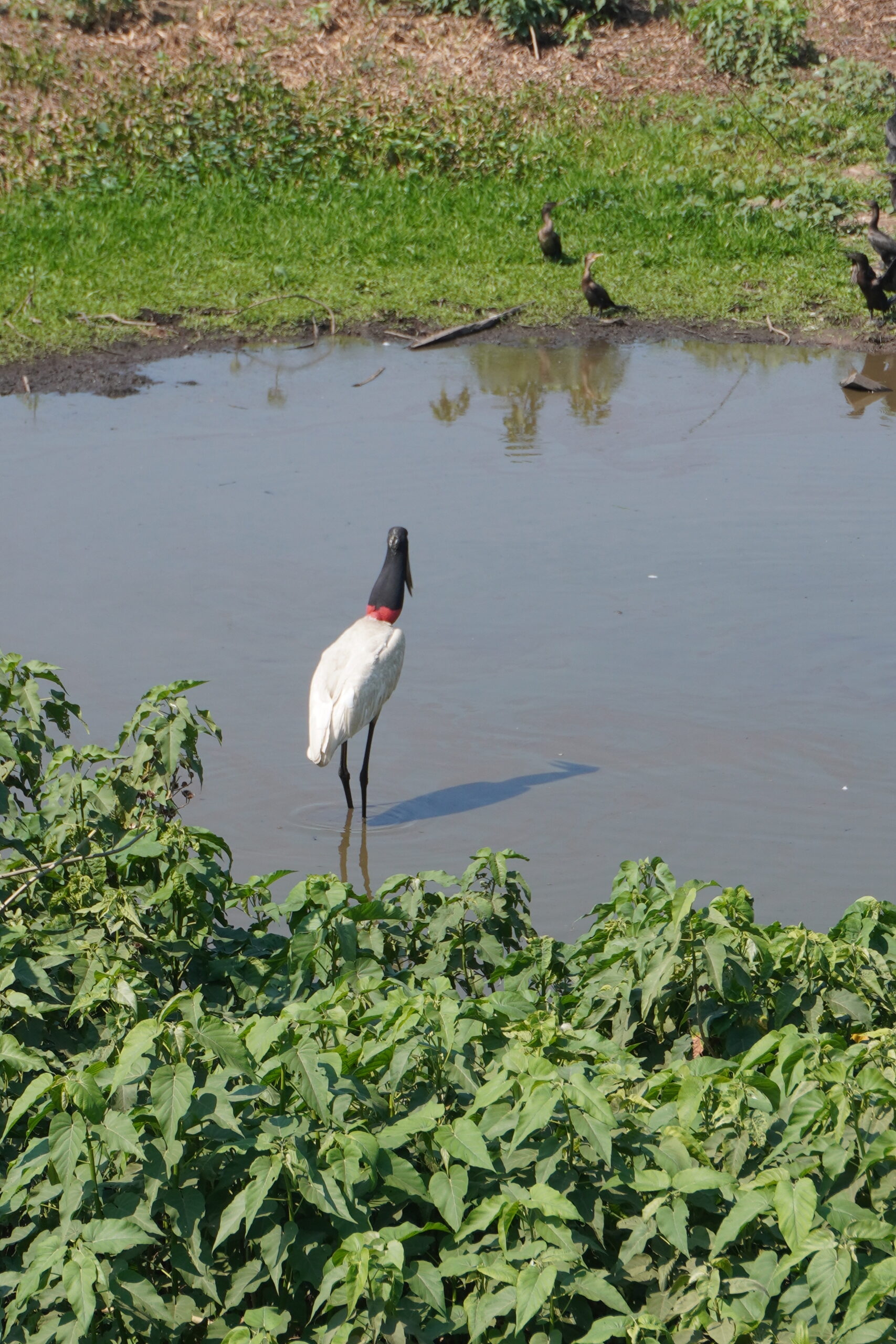
Stays in Porto Jofre tend to offer airport transfers for R$1.500 – R$2.000 per car, which I find to be excessive. Doing the drive yourself will be way more fun and affordable!
How long to stay in Porto Jofre?
A 3-day/2-night stay is ideal for Porto Jofre, although many budget travelers manage with just one night! With plenty of other incredible destinations to explore in the region, you don’t need to spend too long in Porto Jofre to make your trip to Brazil worthwhile.
Here’s my recommended Porto Jofre travel itinerary:
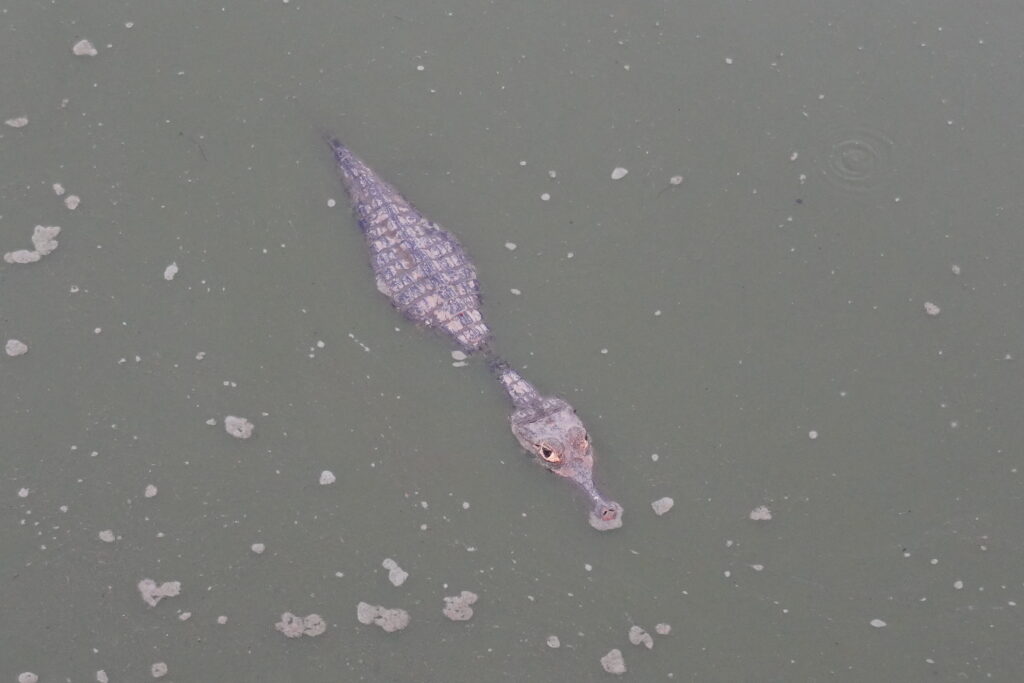
Day 1: Drive from Cuiaba (the nearest airport) to Porto Jofre through the Transpantaneira road. The drive itself is kind of a safari, and you can stop as you go to enjoy the scenery and the wildlife.
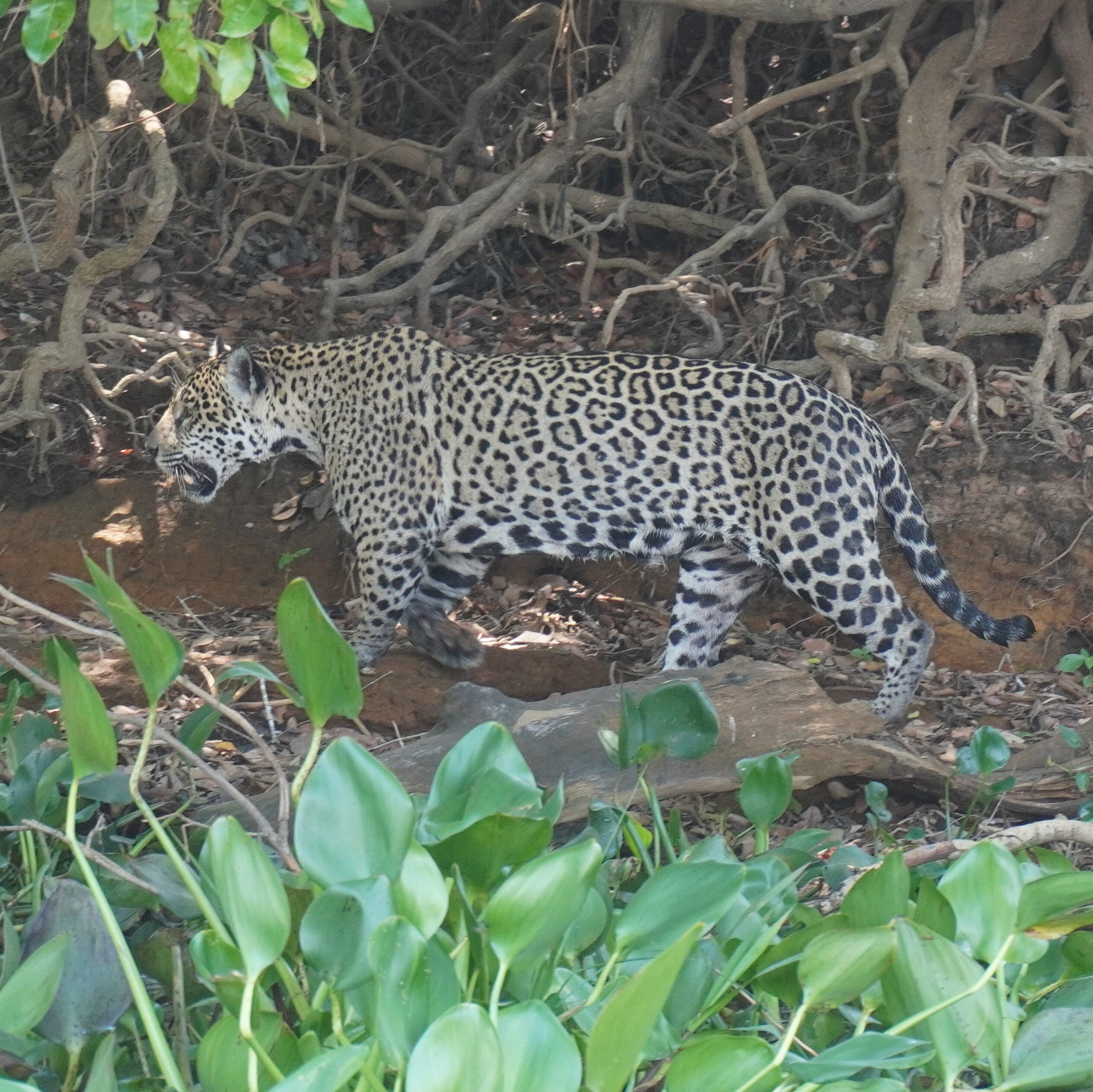
Day 2: Go on a full-day jaguar-watching tour in Porto Jofre. You will spot more than just jaguars on this tour, which goes from 7 AM to 5 PM. This might just be one of the best days of your life if you are big into wildlife watching.
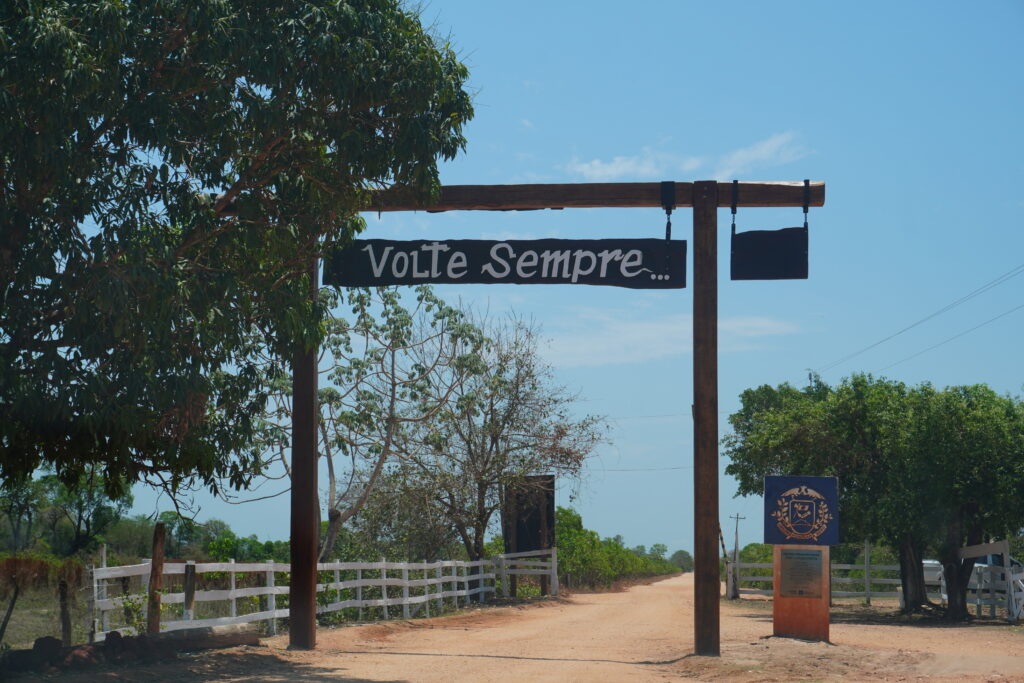
Day 3: Drive back to Cuiaba through the incredible Transpantaneira road. From Cuiaba, you can visit the Chapada dos Guimaraes or Nobres, each about an hour’s drive away. If you are feeling adventurous, drive 5 more hours to check out Barra do Garças!
Pro tip: If you enjoy fishing, go on a fishing tour on day 3! If you’re lucky you may even get to see jaguars while fishing!
This itinerary includes one day for the boat tour, which is expensive but only needs to be done once! Since jaguars are spotted over 90%+ of the time during the dry season, taking a long (and costly) day tour more than once is unnecessary unless you’re a professional wildlife photographer.
Where to stay in Porto Jofre?
Porto Jofre has only two types of accommodation: very expensive and extremely cheap. It is up to you to decide which extreme you prefer!
Luxury stays: pousadas and liveaboards
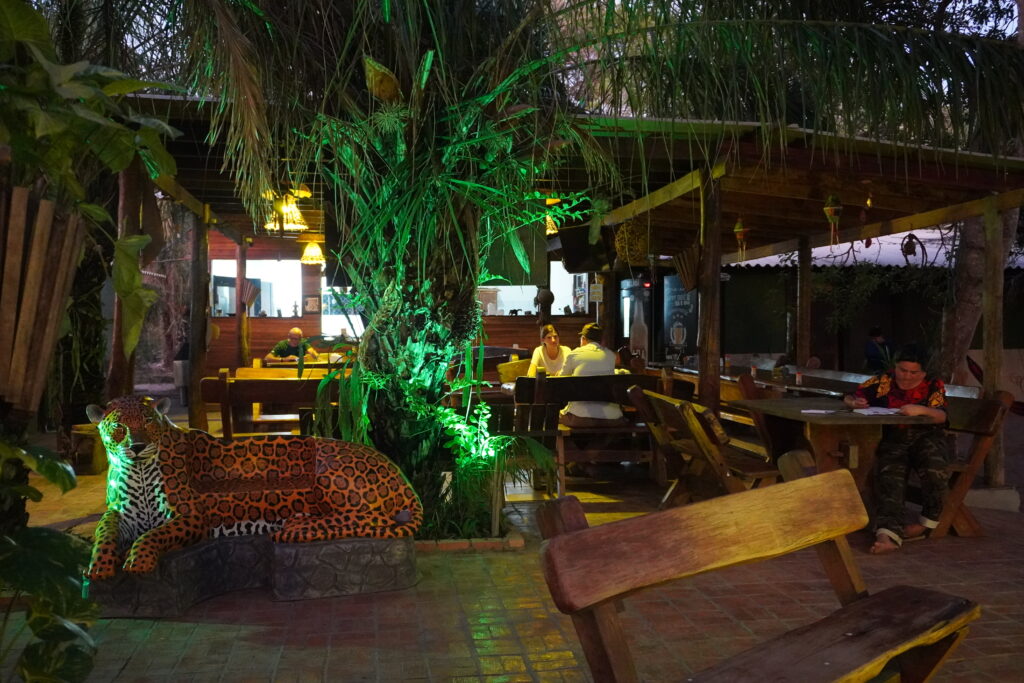
Porto Jofre has a lot of stays, or “pousadas”. Despite the high price tag of about R$1000-2000 per night, the stays are quite simple. They follow an “all-inclusive” style, with all meals included. In my experience, the food options were not as diverse as what you’d see in a resort, but still quite delicious!
Pro tip: Book the stay by messaging the pousada directly via WhatsApp. If you don’t speak Portuguese, use ChatGPT (not Google Translate) to translate the interaction!
Many coming in group tours stay in expensive liveaboards anchored on the river, but this option is not typically available unless you join them on a multi-day expedition.
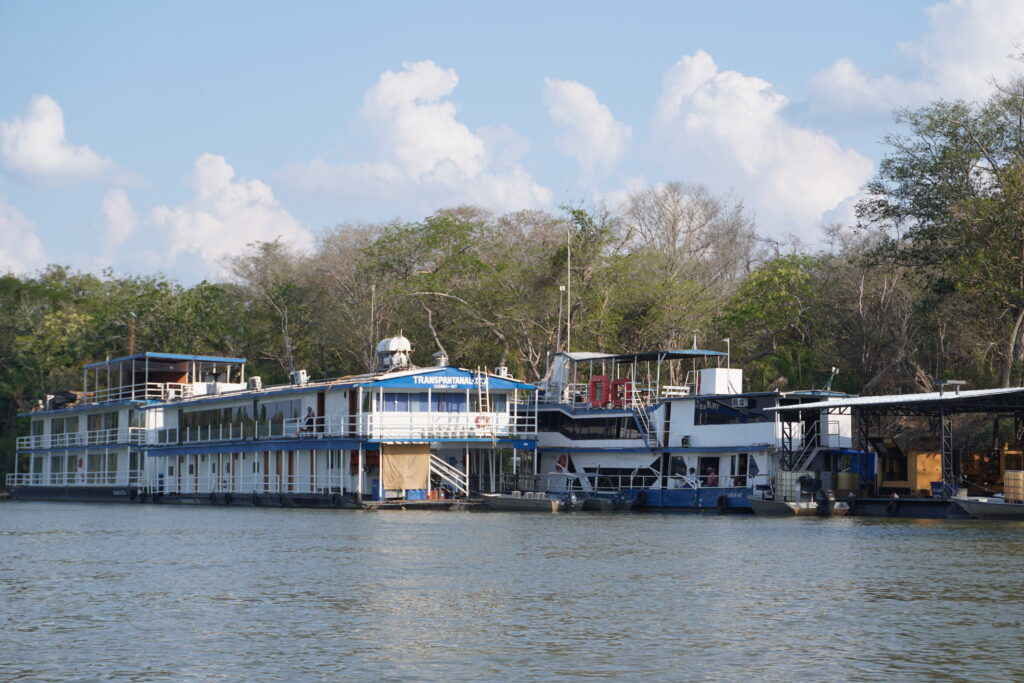
Budget option: camping
Camping is the only other option for those who are more budget-conscious. I camped at Pousada Berço Pantaneiro for R$70 per night.
Their campsite was okay, and my only complaint was the cleanliness of the bathroom we shared with the pousada’s staff. Next time, I will invest in getting a room to have access to better facilities.
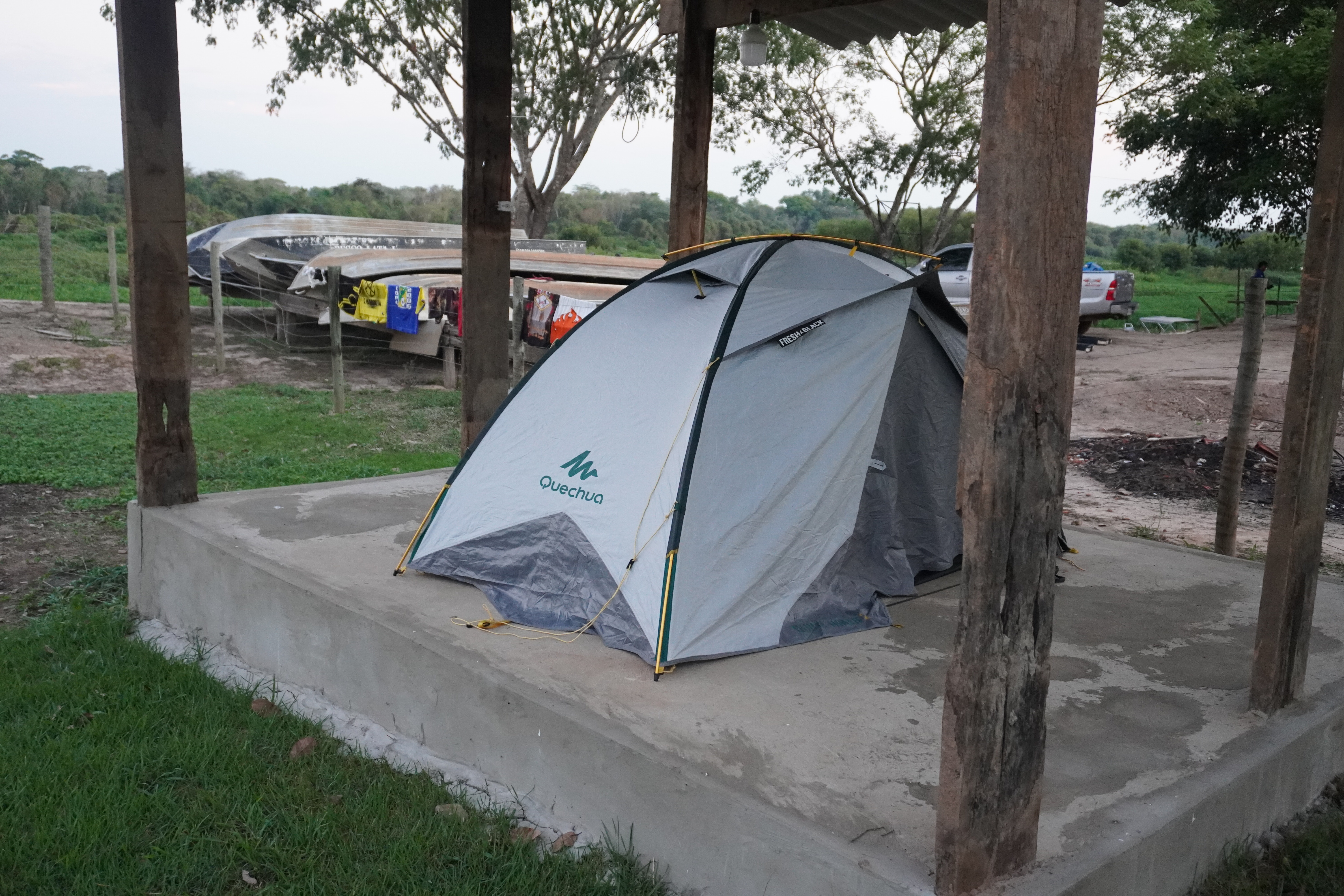
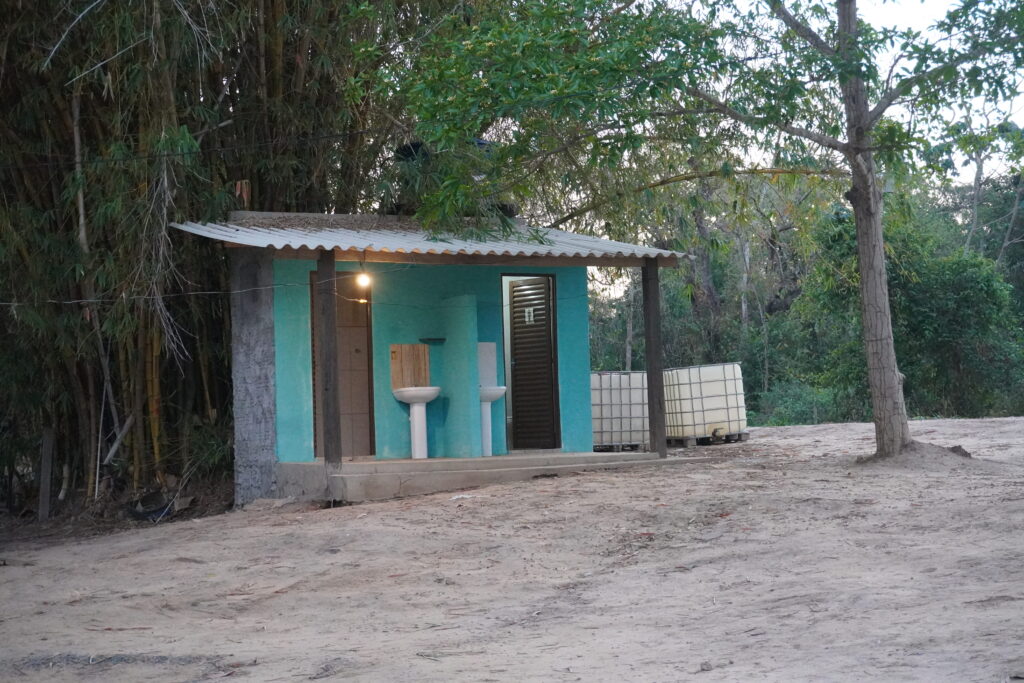
Daniel, the pousada‘s manager was beyond kind and let me enjoy delicious meals with the all-inclusive guests for free!
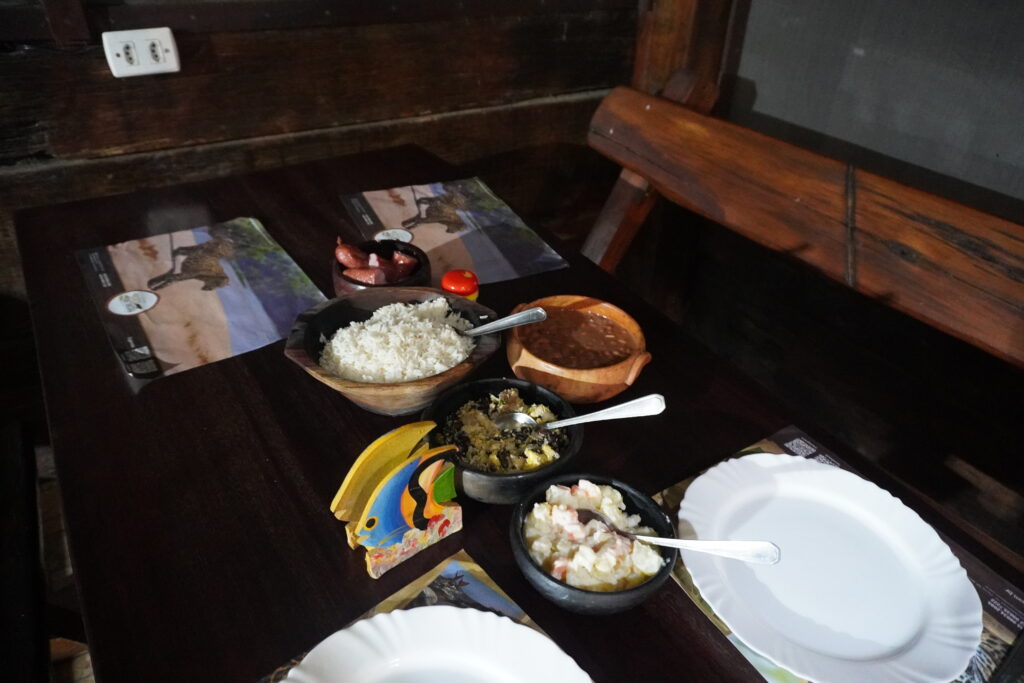
Because Porto Jofre is mainly visited by loaded foreign visitors, the camping options are not very developed. Each campsite is unique, but you should not expect to have access to a kitchen.
Important to note: There aren’t any restaurants in Porto Jofre, so you should expect to eat all the meals in your pousada. Additionally, there are no supermarkets, so if you’re camping, you’ll need to rely on the food and water you bring with you.
How to book a stay in Porto Jofre?
The best way to book a stay in Porto Jofre is by messaging the chosen accommodation directly via WhatsApp!
Some agencies like Interativa Pantanal offer the service of booking but I do not recommend them because:
- Prices are higher (upwards of 10%)
- You’d have to still contact them them via WhatsApp to book, so it’s the same effort as contacting the stay directly
- They require customers prepay the full amount, while the hotels tend to have more flexible policies. In fact, I only paid for my stay and tour at Pousada Berço Pantaneiro when checking out.
How much is the Porto Jofre boat tour (Jaguar Safari)?
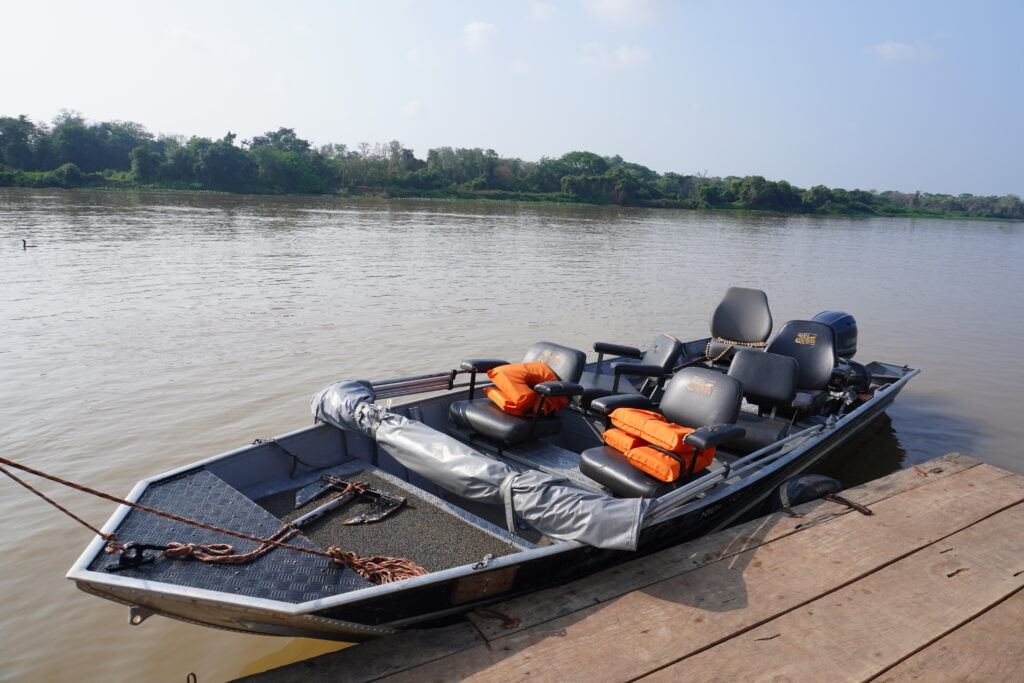
If you book the boat tour directly with hotels (in Portuguese “pousadas“) and tour operators via WhatsApp, the full-day tour costs about R$1900 per boat, which fits up to 5-6 people.
Unfortunately, it is not possible to book just a seat on the boat! I tried everything to find a group to join but had no success and ended up paying the full private tour price with my friend.
Apparently, the only way to get on group tours is by joining one of the many Pantanal Expeditions that span over several days and cost thousands.
Going on the Porto Jofre boat tour
The highlight, and the only special reason, to visit Porto Jofre is the boat tour. You can choose between the half-day tour or the full-day tour, with the latter option having the best cost-benefit.
I booked my private tour via WhatsApp with Pousada Berço Pantaneiro and I highly recommend them.
Important to note: Porto Jofre is not a solo-traveler-friendly destination because the boat tours are private, meaning that you need to pay the full ~R$1900 to get a 6-person boat for yourself. I was lucky enough to come across a fellow traveler in Chapada dos Guimaraes who was willing to share a boat with me!
The full-day tour goes from 7 AM to ~5 PM, and a Brazilian-style Lunch box is served during the tour and tourists eat inside the boat.
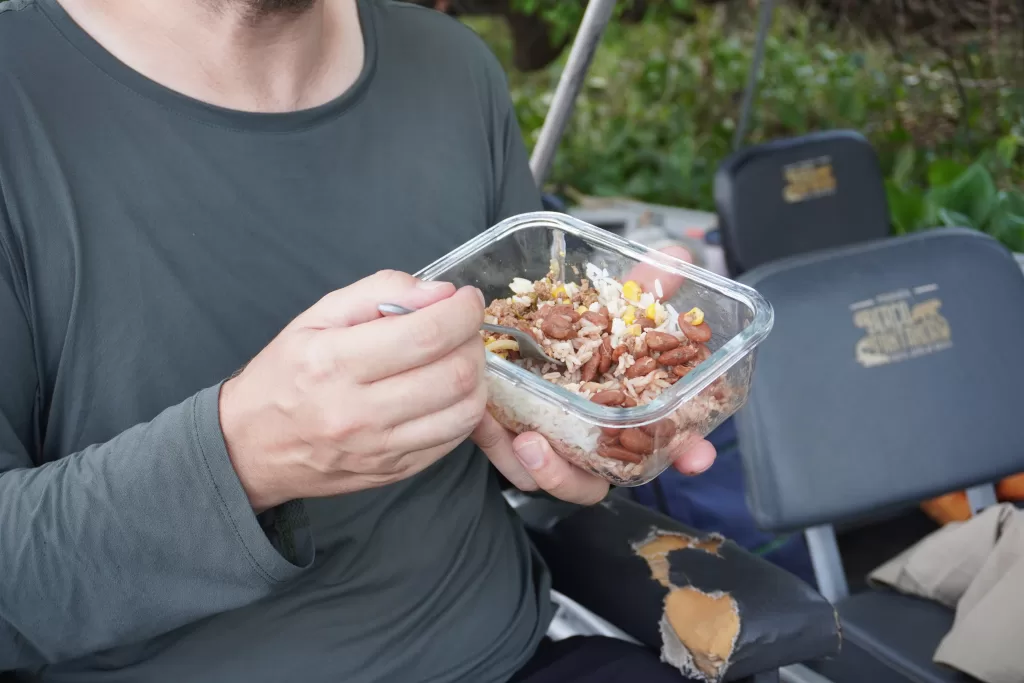
We were quite lucky and got to have our meal while watching a jaguar rest on top of a tree!

During the tour, I spotted so much wildlife that it would take a whole separate blog post just to talk about: Five jaguars, 5 capybaras, 3 groups of giant otters, countless caimans and so much more!
Here are some of my favorite wildlife pictures from the Porto Jofre boat tour:
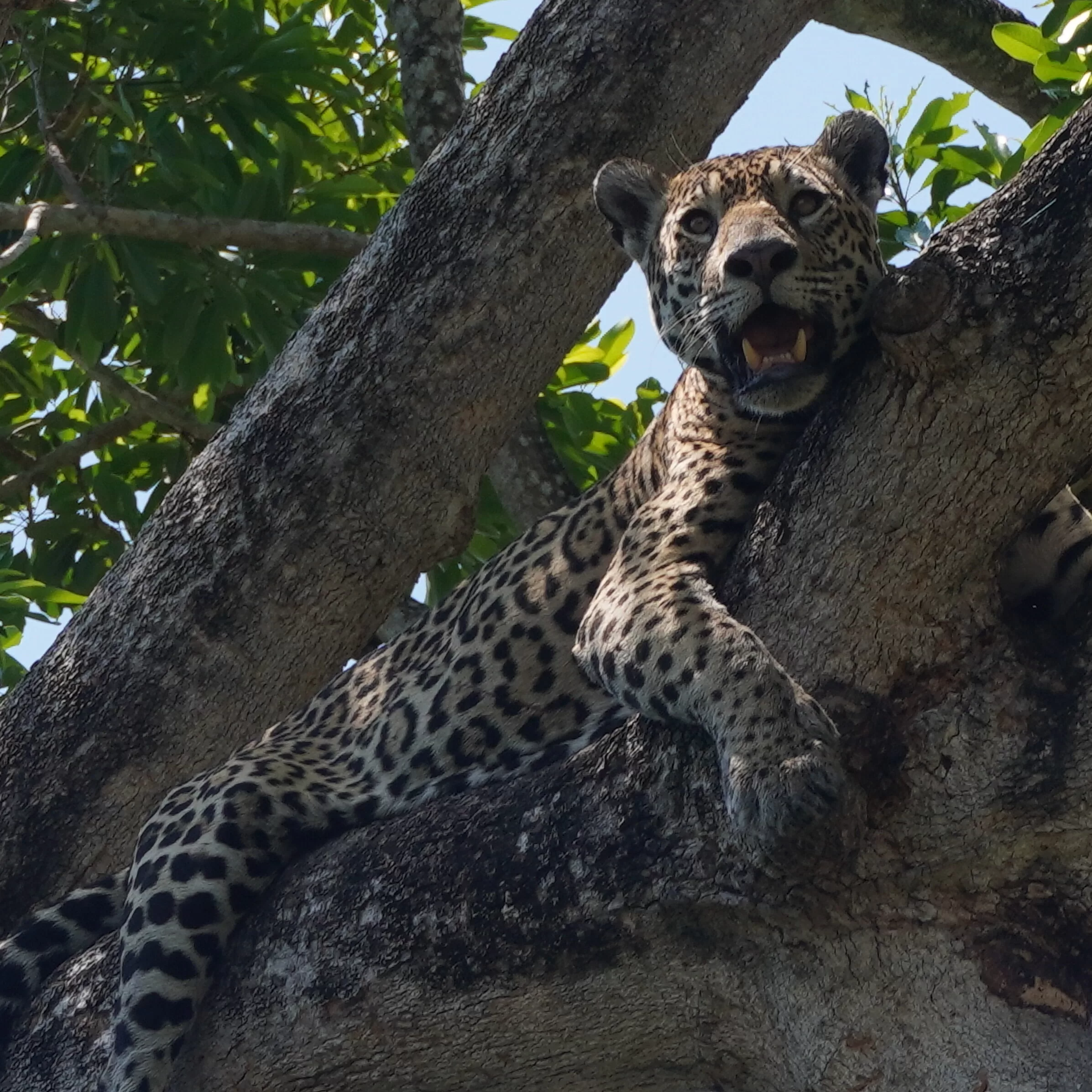

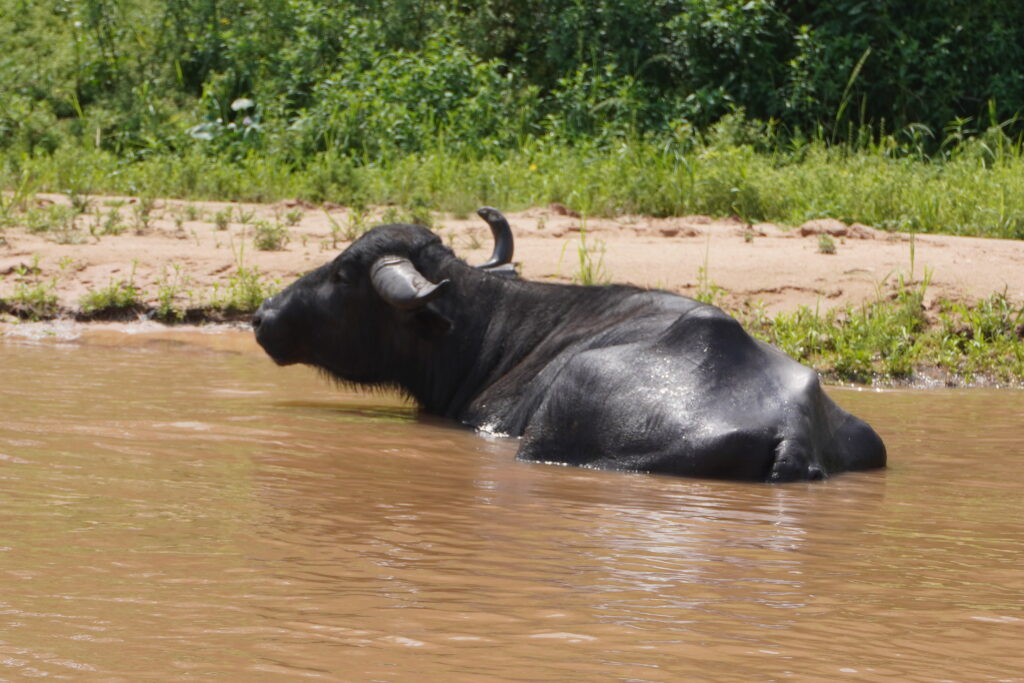
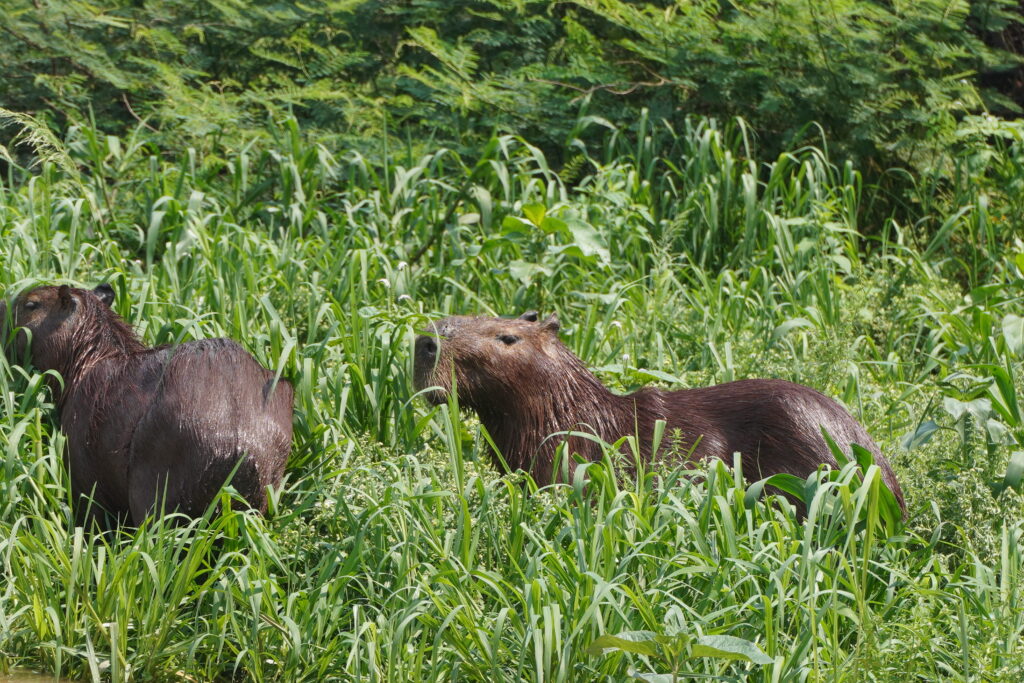
What to bring to Porto Jofre?
Here is my selection of the must-have items for a trip to Porto Jofre! For a full list of all my travel essentials, check out my travel resources page.
Bug repellent: There are so many bugs in Porto Jofre! I recommend bringing a strong bug repellant to stay sane during your trip.
Sunglasses: An absulute must – the water of the rivers keep reflecting light, and your eyes might get tired very easily.
UV Protective Clothing & sunscreen: Sitting on a boat for 10 hours under the Pantanal sun can cause quite some damage. My UV jacket was a lifesaver, but next time I would also bring UV protective pants to stay cooler throughout the tour.
Binoculars: I bought these affordable and small binoculars for this trip and they did the trick! I am now sure to bring them on just about any ecotourism trip I go on!
Microfiber towel & camping tent: Must-have items for those who choose to camp
Is Porto Jofre safe?
Due to its remote location, Porto Jofre is a very safe place to visit! Also, while visiting Porto Jofre you are not likely to leave your accommodation unless going on guided tours.
Cuiaba and the neighboring towns are also relatively safe, but you are always recommended to follow the general health and safety guidelines for traveling to Brazil!
What to do near Porto Jofre?
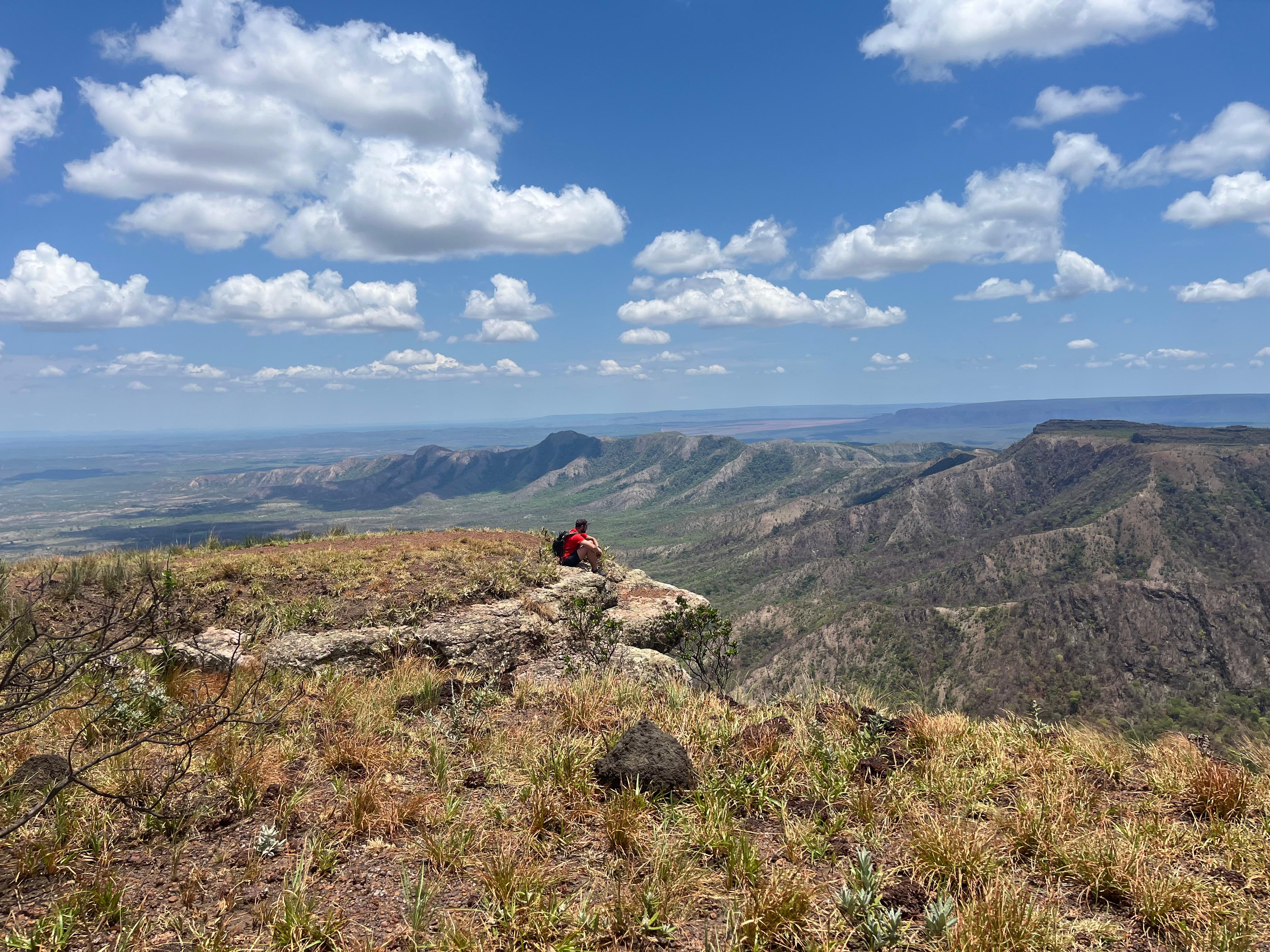
Porto Jofre is an amazing wildlife destination because of the boat tours, but there isn’t really anything else to do in town. If you want to continue exploring the Pantanal after your stay in Porto Jofre, many stays at the beginning of the Transpantaneira in Poconé offer day use for their facilities, horseback riding, and bird-watching tours.
Beyond Pantanal, the Brazilian state of Mato Grosso is home to three other amazing destinations:
- Chapada dos Guimarães (1hr drive from Cuiaba): Amazing hiking destination with free waterfalls to bathe in.
- Nobres (1.5hrs drive from Cuiaba): Crystal-clear waters and waterfalls where you can swim and snorkel. Nobres is a lot like Bonito, a world-famous Brazilian eco-tourism destination.
- Barra do Garças (6hrs drive from Cuiaba): Hidden gem with crystal clear waters and rock formations. This spot also has a lot of historical references, and Indiana Jones’s character was inspired by an archaeologist who disappeared there!
The wrapup: watching jaguars in Porto Jofre
Now you know how to plan the perfect trip to Porto Jofre and its nearby cities. I hope you will spot tons of wildlife and refresh from the Pantanal and Cerrado heat in stunning waterfalls during your trip to Brazil!
Planning a trip to Brazil? Check out our other helpful guides!
✅ 3 Best Places to See Jaguars in Pantanal, Brazil
✅ Is Brazil safe? A travel safety guide by a solo female traveler
✅ Iguazu Falls: Everything you need to know before planning your trip
✅ What To Do in Lençóis Maranhenses: Best Tours & Activities With Prices
Any questions?
Ask all your questions in our Brazil travel Facebook group — we’ll be happy to help!

